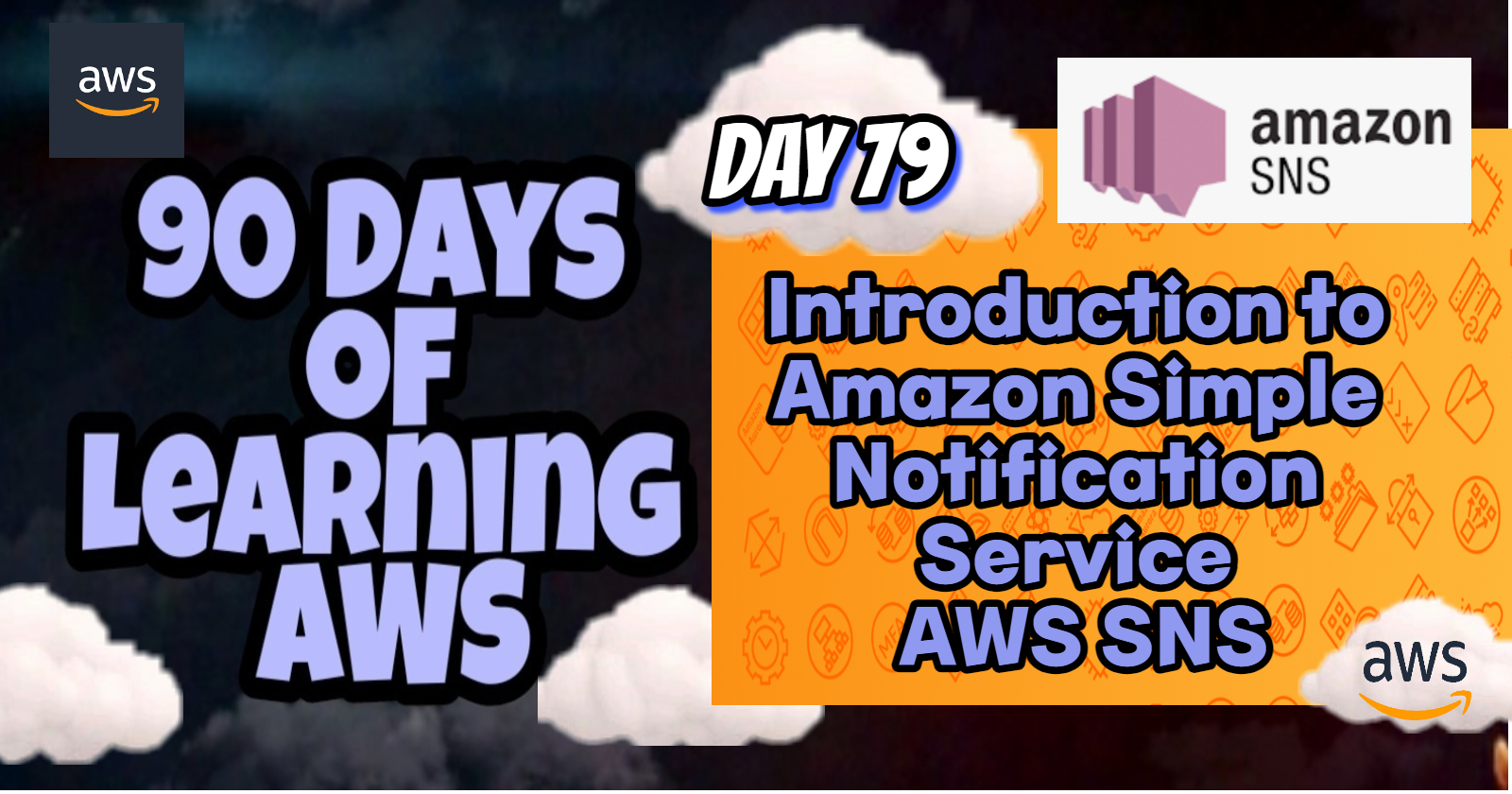Introduction to Amazon Simple Notification Service (AWS SNS)
 Shailesh
Shailesh
Introduction
Amazon Simple Notification Service (SNS) is a fully managed messaging service that enables you to send messages to various subscribers via multiple delivery methods, such as email, SMS, and HTTP/S endpoints. It plays a critical role in building distributed and decoupled applications in the AWS cloud by allowing communication between different parts of your system in a scalable, reliable, and cost-effective manner.
In this blog post, we’ll explore what Amazon SNS is, its key features, common use cases, and how it can be integrated with other AWS services to create powerful messaging and notification solutions. Additionally, we’ll delve into the SNS and SQS Fan Out pattern, a popular architecture design pattern for scaling message delivery.
What is Amazon Simple Notification Service (AWS SNS)?
Amazon SNS is a notification service that allows you to send messages (also known as notifications) to a large number of subscribers efficiently. These subscribers can include applications, services, or end-users. SNS is particularly useful for enabling event-driven architectures, where different components of an application need to respond to specific events.
🟣Key Features of AWS SNS:
Multiple Protocol Support: SNS supports multiple messaging protocols, including SMS, email, HTTP/S, Amazon SQS, and Lambda functions.
Topic-Based Architecture: SNS uses a topic-based architecture where messages are published to topics, and subscribers receive notifications based on their subscriptions to these topics.
Scalability: SNS automatically scales to handle large volumes of messages and subscribers.
High Availability: AWS SNS is designed to be highly available, ensuring that messages are reliably delivered to all subscribers.
Flexible Message Delivery: Messages can be delivered in different formats, including raw text and JSON. This flexibility allows for easy integration with various applications and services.
🟣Common Use Cases for AWS SNS:
Application Alerts: Send alerts and notifications to administrators when specific events occur in an application.
User Notifications: Notify users via email or SMS about account activities, such as password changes or new messages.
Event-Driven Architectures: Trigger downstream processes or services when specific events occur in your application.
Broadcasting Messages: Send promotional offers or updates to a large number of customers simultaneously.
SNS and SQS - Fan Out Pattern
🟣What is the Fan Out Pattern?
The Fan Out Pattern is a messaging pattern that involves sending a single message to multiple recipients (or subscribers) by using Amazon SNS in combination with Amazon SQS. In this pattern, a message is published to an SNS topic, and that message is then distributed to multiple SQS queues. This allows multiple services or applications to independently process the message at their own pace.
🟣How the Fan Out Pattern Works:
SNS Topic Creation: You create an SNS topic that acts as the central hub for publishing messages.
SQS Queues Creation: Create multiple SQS queues where each queue represents a different consumer or service that needs to process the messages.
Subscriptions: Subscribe each SQS queue to the SNS topic. This ensures that when a message is published to the SNS topic, it is automatically sent to all the subscribed SQS queues.
Message Processing: Each SQS queue independently processes the messages it receives, allowing for parallel and decoupled processing.
🟣Benefits of the Fan Out Pattern:
Decoupling: Services that process messages are decoupled from the producer, allowing them to scale independently.
Parallel Processing: Multiple consumers can process messages in parallel, increasing the overall throughput of the system.
Fault Tolerance: Even if one consumer fails, other consumers can continue processing messages without interruption.
🟣Use Cases for the Fan Out Pattern:
Logging and Monitoring: Distribute log data to multiple logging services or monitoring tools for analysis.
Data Processing Pipelines: Use the Fan Out Pattern to send data to multiple data processing services, such as analytics engines and data warehouses.
Microservices Architectures: Allow multiple microservices to independently process events generated by other parts of the system.
🟣Real-World Example:
Consider an e-commerce platform where customers place orders. When an order is placed, an SNS topic called "OrderPlaced" can be used to notify multiple services, such as:
Order Processing Service: Processes the order and updates inventory.
Email Notification Service: Sends a confirmation email to the customer.
Analytics Service: Records the order data for reporting and analytics.
Each of these services can have its own SQS queue subscribed to the "OrderPlaced" SNS topic. When an order is placed, the order details are published to the SNS topic, and the message is sent to all the subscribed SQS queues. This allows each service to independently process the order information in parallel, ensuring that the platform scales efficiently.
Conclusion💡
Amazon SNS is a powerful tool for building scalable, decoupled, and event-driven architectures. Its ability to send notifications to multiple subscribers across various protocols makes it an essential service in the AWS ecosystem. By integrating SNS with SQS in the Fan Out Pattern, you can further enhance your system’s ability to handle large volumes of messages, ensuring that your applications remain responsive and scalable.
Stay tuned for more AWS insights!!⚜ If you found this blog helpful, share it with your network! 🌐😊
Happy cloud computing! ☁️🚀
Subscribe to my newsletter
Read articles from Shailesh directly inside your inbox. Subscribe to the newsletter, and don't miss out.
Written by

Shailesh
Shailesh
As a Solution Architect, I am responsible for designing and implementing scalable, secure, and efficient IT solutions. My key responsibilities include: 🔸Analysing business requirements and translating them into technical solutions. 🔸Developing comprehensive architectural plans to meet organizational goals. 🔸Ensuring seamless integration of new technologies with existing systems. 🔸Overseeing the implementation of projects to ensure alignment with design. 🔸Providing technical leadership and guidance to development teams. 🔸Conducting performance assessments and optimizing solutions for efficiency. 🔸Maintaining a keen focus on security, compliance, and best practices. Actively exploring new technologies and continuously refining strategies to drive innovation and excellence.